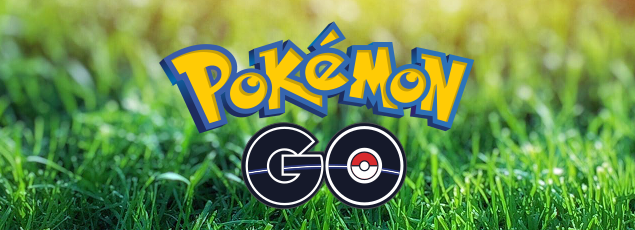
JRPGs are typically adventures that pit us against evil forces trying to obliterate or ruin whole realms. Yet, the way these games have often had us interact with those realms is by culling their wildlife and looting their natural resources. It's been par for the course that even when cast as heroes, we carry out behaviour similar to that of the villains: we degrade the health of the world to make ourselves more powerful, and we thrive on an antagonistic relationship to the land. The original Pokémon went some way to fixing that problem. It didn't entirely solve it: it's still a game where your first response to fauna is often to hurt it rather than avoid or nurture it and where your relationship to your pets is ultimately one of control. However, it is a title that lets you fight with the natural creatures of the world rather than just against them, and in its writing, values a harmonious and companionate connection to the ecosystem. The jolly townspeople and aspirational figures of Pokémon Red and Blue respect their animals and shower them with love, while Team Rocket, the villains, hurt and objectify living things for power and profit.
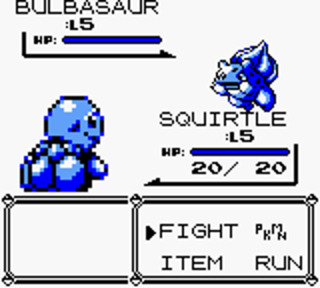
This might all sound academic, but it's because the Pokémon can be brought on board as allies and not just defeated and disposed of that we get the series' trademark collection mechanics, charm, and unique mode of battle. In short, the core Pokémon games were revolutionary because they changed how players related to the setting of a JRPG, including its plants and animals. So, it's in that tradition that 2016's Pokémon GO comprises a massive rethink of what it means to explore and interact with an in-game environment. Playing video games with navigable spaces has always involved a strange marriage of staying stationary and mapping entire worlds. We sit on our sofas while riding across entire continents or flying spaceships through whole galactic systems. For better or for worse, the domains we explore exist only on a screen, and we move through them with just our digits which can make these environments and our procession through them feel less real. A skyscraper we stand in front of in a video game doesn't convey the same sense of presence and tangibility as one we face in our city centre.
Virtual reality systems are the prevailing attempt to change that, but despite large-scale open worlds being explosively popular in non-VR titles, relatively few of them exist in virtual reality games. Such experiences prefer to fill out enclosed, tightly controlled spaces. There's also a disparity between how real VR worlds feel to look at and how real it feels to move about them: we don't use our legs to get from A to B in cyberspace, except in the case of tiny scale VR games. In anything approaching spacious environments, teleporting from place to place became the norm as a preventative measure against motion sickness, and in many cases, to deal with issues of the play space being smaller than the virtual space. Lastly, whatever suspension of disbelief we may achieve in virtual surroundings, VR or not, we know that their worlds are not the real world.

Top minds are hard at work trying to untangle these knots in the fabric of VR, but there's a line of reasoning that would say trying to overcome all these issues by building elaborate realities inside computers is a moot effort when we already have a world that feels 100% true-to-life: the physical world. There is an environment with distant borders, full of concrete locations, that we recognise as reality, and that we move around realistically every day because it's the one outside our front doors, so why not set a game there? We talk about virtual reality as being on the bleeding edge of total-immersion video games, but maybe we should consider augmented reality another candidate. For the uninitiated, the phrase "augmented reality" refers to technologies that take our world and add virtual elements to it through an interface that displays some mixture of two.
Microsoft used their Hololens headset to make webpages and diagrams, among other elements, appear in the space around users. Minecraft Earth is an augmented reality phone game which lets any player use their camera to see persistent community-created art pieces overlaid on the real world. In the case of Niantic Labs' Pokémon GO, we view a map of the real world that shows our current location and the locations of pokémon, as well as gyms and pokéstops. We can catch pokémon to populate our collection, battle them in gyms, and gain more supplies to do both from pokéstops.

For the first time in history, we have video games in which we're moving through physical environments with our physical bodies, and that's a milestone. While the emphasis of existing entertainment software projects has been on inventing new realities wholecloth, augmented reality games provide the possibility of many other realities layered over our own. Everything that exists in the real world exists when you're exploring an ARG, but the purpose of certain elements may be changed, or their importance may be heightened. Other fictional entities may also accompany them. Like virtual reality and traditional screen-based media, augmented reality has its upsides and downsides; both of which come through in Pokémon GO. "Go" is an operative word here; our mode of motion through the world is fundamental to how the game is designed and how it feels to play.
The original Pokémon games subsisted on strategic challenge and resource organisation, but GO asks the player to walk about without bumping into anything which requires some effort and concentration. Additionally, the game places us outdoors and sometimes also in social scenarios, so we might not be in a headspace where we want to delve deep into inventory management and tactical approaches. We tend to be more comfortable sorting through acquisitions and movesets in the cosiness of our homes than we do while out weathering the elements, and as Pokémon GO is about staying on the move, it doesn't want to nail us down to one spot for too long with involved tasks. For all of these reasons, its mechanics are more streamlined and require less conscious thought to work with than those of its JRPG colleagues.
This might make GO sound like a less exciting game than those handheld console titles it's based on, but this is a new kind of entertainment, and we can't assess it precisely like the experiences of old. Niantic's game places less weighting on tests of timing, accuracy, and tactics than a classical video game because just the act of ambulating around brings pleasure. Like athletic motion control games such as Your Shape or Ring Fit Adventure, the exercise we get from playing GO has our bodies release endorphins for a physical high, meaning the experience doesn't need to rely as much on mental stimulation. You'll also notice that the designers sort the game's tasks so that we can perform the mechanically lighter ones on the go, but we can carry out those that ask for more consideration when we have a chance to sit down and ruminate on our decisions. You contest territory and catch new creatures while plodding the streets, but you can transfer excess Pokémon, toss unneeded items, and exchange gifts with friends at any time. Despite being a game that takes place in an environment where you often aren't in the mood to stop and think, it doesn't have to be ruthlessly simplistic.

Some games look at the activity of going somewhere and see getting to the destination as the point, but certain games, like Pokémon GO, also see worth in the act of the going itself. You more commonly find this attitude in games which try to make movement feel freeing such as Sunset Overdrive or Star Fox. However, these types of games still rarely ply you with rewards just for advancing from one spot to another. GO is particularly sensitive to this idea of awarding journies and that's apparent through the systems dispensing candy and letting you hatch eggs as you step, as well as dropping bonus items at the end of a week based on how many kilometres you covered. Many towns and cities also have pokéstops and gyms to stumble across on every other block. Most open-world games pay out valuable items when you solve a problem at a specific location, or at least when you reach that location. In Go, you are given prizes simply for wandering; whatever destination you pick is a correct one. In another game, it might feel patronising to be handed a gift for some aimless traipsing about, but given the pedestrian basis of GO, it takes, at minimum, modest effort to reach a location without taking a vehicle and so those rewards feel merited. It's also necessary for the systems to be flexible about where they reward us for going because not every location in our stomping grounds is eminently accessible from every other. Sometimes we end up on a main road that doesn't have many side roads forking off of it. Sometimes a trail may be blocked.
The program also incentivises walking through preventing you from collecting new items or battling in gyms from a moving vehicle. This helps preserve the tone of the mainline games: The continents in the Pokémon JRPGs are without cars, and that leaves them as natural havens with undisturbed wildlife. It means that when we proceed across them, we feel more like a hiker or an adventurer than a taxi driver trying to hit all the points on their route. Going without automobiles also creates a sense of childlike exploration. In an ARG specifically, the chassis and windows of a vehicle could confine you from the outside environment and Pokémon is very much about being outdoors, so in GO, anything with wheels is discouraged.
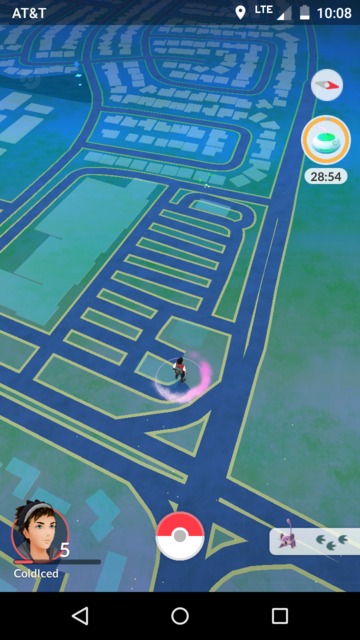
The title also attaches us to the destinations we reach through different methods than conventional video games. Most games have to do a lot of inventive world-building and plaster up many striking art assets to invest us in a setting, but Niantic's games have the advantage of placing us into a world where the landmarks already have meaning to us. We have some familiarity with the churches, sculptures, public service buildings, and other spots which make up our towns and cities, and many of them have played starring roles in our lives or the lives of people we know. And just as our experience of the real world can add value to these meta elements, the objects and concepts in the game can change our perception of the locations it utilises.
It's easy to live in a town for a good portion of your life and never know all of its streets, squares, and parks. We tend to follow invisible lines through our cities that take us to our job, our local, our friends', our doctors, and generally a limited set of places we chose based on their utility to us. We often consider any other routes off the map and can fail to explore whole corners or boroughs of our homes. This can have the effect of making our surroundings feel smaller than they are. Some of us take holidays to the other side of the planet before we tread the alleys and parks right under our noses. Conversely, in video games, we often want to jam our camera into every nook and cranny and feel a yearning to explore as the mood takes us. Pokémon GO puts you in touch with where you live by encouraging you to march further afield and visit pokéstops, gyms, and spawn points that you won't find on your regular routes and won't always be in the main hubs of your villages or metropolises. It can make moderately sized locations feel big, and big locations feel gigantic. Especially because, again, you explore them on foot.
The game can also make your regular commutes and errands feel that bit less mundane through altering your viewpoint on your surroundings. You're not just in a car park or at the post office, maybe you're sneaking up on a Burmy or facing down a Team Valor stronghold. Video games often come in the evening or on the weekend, after we can put the tedious trips, chores, and work of the day behind us, but a game like Pokémon GO isn't just a leisurely pocket of escapism from the everyday. Instead, it inserts itself into your everyday. It actively takes pedestrian parts of your life and tries to make them more fun. This is possible because Pokémon GO takes place in the same world that your non-leisure tasks do.
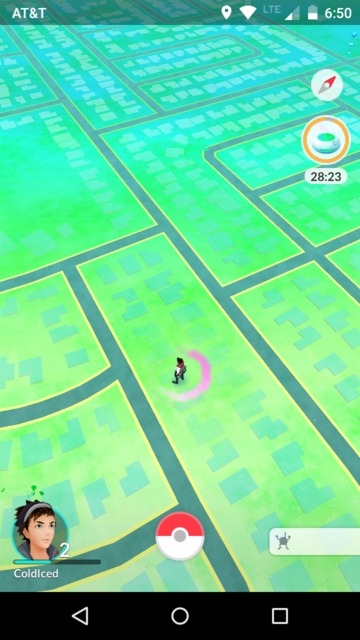
If you wanted to talk up augmented reality games, you could say that the strengths of an ARG come down to it playing out in a realistic environment, as well as being positively transformative on the physical world and our interactions with that world. But if you wanted to go in on the weaknesses of augmented reality, you could say that its issue is that developers lack total control over the structure and features of its map. Sometimes aspects of the physical world and its functions for non-gaming purposes butt up against the ideal conditions for a piece of entertainment software.
That describes a broad range of problems, but a prominent obstacle here is that if you are going to use the tangible world as the foundation for your game map and you want your game to be widely playable, then you have to craft environments on the scale of entire continents. It's an obvious no-go to try that with human level designers, but Niantic has used a combination of algorithms, porting data from an older game, and crowd-sourcing to approximate appropriate placement of pokéstops, gyms, and spawn points across Earth. However, we must remember that Niantic was a company that took flight within the walls of Google, and many of its employees previously worked on Google Earth and Google Maps. The studio lifted the original map for GO directly from Google Maps. Another company, without that experience with and direct access to the world's most famous navigation software, would find a global AR rollout far more of an uphill struggle, if not impossible. And as successful as GO is, Niantic's best efforts haven't always resulted in fair map design. At least when you work in traditional or VR titles, you know everyone is playing in the same setting and so an environmental change affects one player roughly the same way it will another. Not so in an ARG.
Since the game's maiden voyage, Niantic has been fielding complaints of it encouraging trainers to galavant around graveyards and to cause a nuisance both on and near private property. To address this, the studio shuffled around some stops and added warnings against trespassing, but in mid-2019, eventually had to settle a lawsuit over augmented reality loitering. After being challenged by some frustrated neighbours of Pokémon GO players, Niantic began honouring petitions to remove gyms or stops close to private residences. They also conceded to lock the gyms in some parks outside of park hours and to spread out Pokémon spawn points to discourage players congregating in one area. It shouldn't be surprising that some people wanted an ARG developer to find a middle ground between satiating users and pleasing everyone else around them. Players of other kinds of video games wouldn't need to accommodate non-players in the same way as they venture through dedicated gaming spaces cut off from the real world. The real world serves mixed purposes between an ARG playground and many other functions which means it's hard to avoid compromising on freedoms in the ARGs to achieve equitable use of the space.
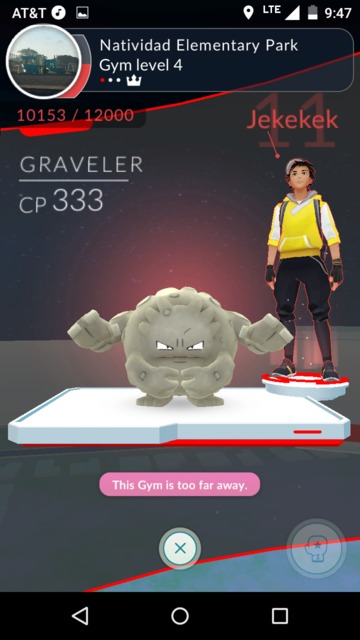
Another issue with operating a large-scale augmented reality game is that when you can't manually place every interactable, you have to use a rule of thumb to work out where to install them. And you can only base that heuristic on available map data for a zone. Ergo, Niantic uses public landmarks to situate gyms and stops. This means that if you don't have a lot of public landmarks around you, then you don't have as many chances to battle and accrue items. Landmarks are generally human-made, and humans have more incentive and capability to make more of them and maintain extensive databases of them in wealthier locations.
Because of this, players in larger, metropolitan areas have greater access to in-game resources than those living in smaller, rural areas, for the same reasons that people in the city generally have better access to services and products than those in the countryside. More developed public transport infrastructure in urban areas also gives players there an advantage when it comes to travelling to the most opportune patches for Pokémon, and some prize critters just don't spawn all that often outside large towns and cities. To their credit, Niantic started to realise this around autumn 2019 and pledged to increase stop and gym density in rural and suburban areas. Later, in December, they declared that they'd be normalising Pokémon spawns internationally. However, some of these changes have yet to come in, and it's hard not to imagine city life always carrying a certain advantage.
This inconsistency between habitable areas also means that GO doesn't systemise the world with the degree of detail that you might find in a conventional video game. If we were designing a standard RPG, we might decide that players can heal up in churches and buy their character new garments at clothes shops. Such functional detail is essential for making a world feel alive and lived-in. The mainline Pokémon titles have working medical centres, mini-marts, casinos, bike paths, safari parks, and more. But play an ARG in a modern commercial district, and you might not see a church for a good mile. Or if you're someone tapping away at your mobile in a little village in Devon, you won't encounter a clothing store on every corner. So, in the interest of making sure you can find in-game services wherever you are, Pokémon GO is exceptionally broad in how it systemises locations. It might gamify a church or a clothing store, but the mechanics don't care that they're churches or clothing stores. It basically recognises two kinds of real-world location: significant landmark and very significant landmark, which get assigned as pokéstops and gyms, respectively.
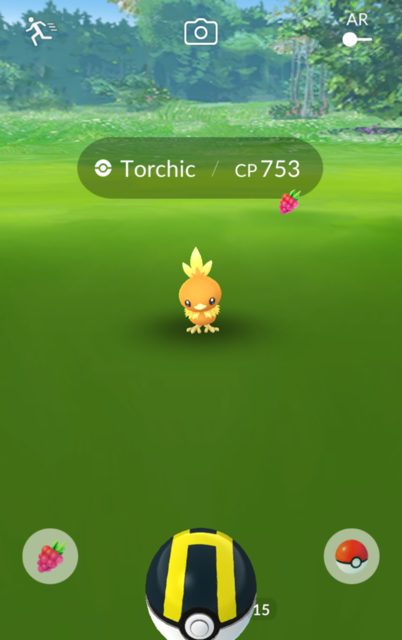
It creates a ludic landscape where the mechanical function of areas often has nothing to do with their real-world functions or aesthetics. The play fails to realise the world because a bodega can have the same utility as a park gate, which leads me onto my biggest gripe with Pokémon GO. For an article about a real-world Pokémon game, we've not talked much about how the Pokémon fit into the world, and that's because they don't really. Natural environments, whether they're countryside, rivers, tundras, deserts, or wherever else are defined, in part, by the wildlife that inhabits in them. You can't have ant hills without ants, farms without livestock, or forests without trees.
By the same token, where animals, plants, and fungi live is a key characteristic of them, and their attributes are products of their adaptation to those environments. Fish have tails instead of legs so they can swim through bodies of water and would seem out of place on a motorway off-ramp. Cacti have a thick, hardy skin because they need to retain as much moisture as possible in an arid climate, so they don't belong in temperate fields. The Pokémon RPGs create believable, natural environments by generally matching wildlife to location. You can find Geodude, the boulder pokémon, in the mountains; Wingull, the seagull pokémon, near the shore; Klink, the gears pokémon, in a lab.
Pokémon GO doesn't find the same verisimilitude between organisms and habitats. In it, you can find the fish on the off-ramp, the cactus in the field, or a penguin at the bank. Spawns may be weighted towards certain weather conditions, proximity to water, or times of day. For example, you might be more likely to find Pollywag, the tadpole pokémon, after a rainstorm; Remoraid, a fish pokémon, near the sea; or Hoothoot, an owl pokémon, at night. But it's also not unusual to discover them under the opposite conditions. There are pokémon consigned to individual regions of the world like Farfetch'd to Asia or Tropius to Africa, but they're few in number and still not limited to appearing in certain kinds of landscape. Tropius could pop up in a rainforest, but it could also be standing in a supermarket aisle.

The pokémon in Pokémon GO feel unsuitably represented because they don't appear in their natural habitats and the game doesn't feel like it does justice to the parts of the real world it systemises. This is due to the pokémon spawns too rarely taking into account the nature of those spaces. In fact, when you can find a Skitty on one side of your town or another, or a Caterpie no matter if you're sitting in your flat or in the woods, the sense that these are unique locations diminishes. Your entire home area can easily devolve into a monospace. However, the game would struggle to localise the spawns of pokémon for the same reason that it would have difficulty lending representative gameplay properties to landmarks.
Players need most resources in the game to be available nearby for them to get a rich play experience, but many trainers aren't going to live near to certain geographical features, and so wouldn't be able to obtain certain animals. A part of me wants a Pokémon GO that makes me put on wellingtons and wander down to some wetlands to find Wooper, or hop on a bus into a city centre to catch Pidove, but if those were the requirements for capturing pokémon, what would a citizen of a landlocked country do when it came time to collect a saltwater creature like Mantine? How would a resident of Moscow capture Numel, the camel pokémon? This issue, in some severity, extends to all Pokémon GO players as no one lives close to every type of biome at once.
Games as a medium are constantly expanding the horizons of their worlds, and in making their map the planet Earth, ARGs have pushed the scale of virtual environments further than anyone has forced them before. When you do that you can get a game like Pokémon GO, which refashions our towns and cities into grounds for boundless hiking and exploration. It's a title that says that wherever you are, your normally humdrum world can be one of adventure and fantastical creatures. However, the planet is a map big enough that conventional level design on it becomes impossible. All the architects are left with is algorithmic generalisations about the functions and nature of the objects we live around, the locations we live in, and the imaginary elements it adds to them.
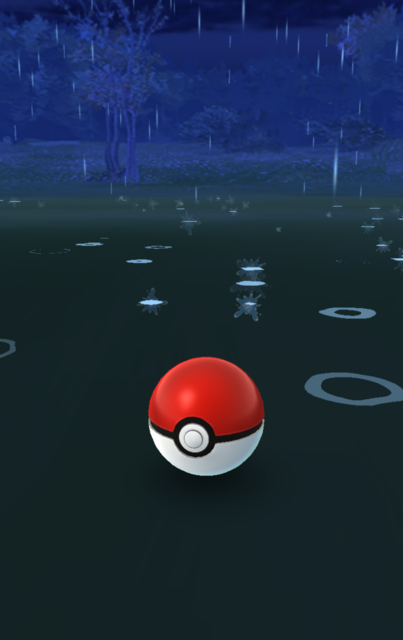
Balancing areas in video games means making sure those areas are all roughly equal in terms of what they offer the player, but Earth has enormous disparities between regions. They vary significantly in their ecology and construction, so any game that is basing its features on real-world elements is going to end up with some incongruity between its zones. Pokémon GO is trying to provide a shared environmental experience for people who don't share environments, and the only way it can use the same language to describe these diverse localities is to be thoroughly vague in its descriptions of them. The same issue is going to plague any ARG attempting to model the world and rolling out on an international scale. This format of game is also likely to run into GO's issue of trying to keep its players from obstructing and disrupting the civilians of the everyday world.
But I'm not going to stop playing Niantic's pride and joy. By basing itself in the physical world, Pokémon GO is a mesmeric example of ARGs' power to make us feel fully present in a tangible game world that has immediate value to us. It also shows how experiences in this format can then heighten the value of our surroundings through making the monuments and buildings we know sources of items that have worth to us. It's taken me to new places and shown me a side of where I live that I've never known, and that's an exceptional achievement for any piece of entertainment. Thanks for reading.
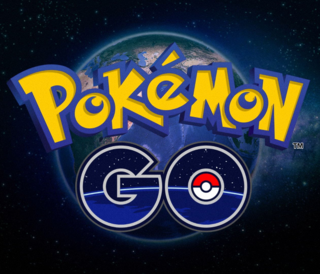
Log in to comment